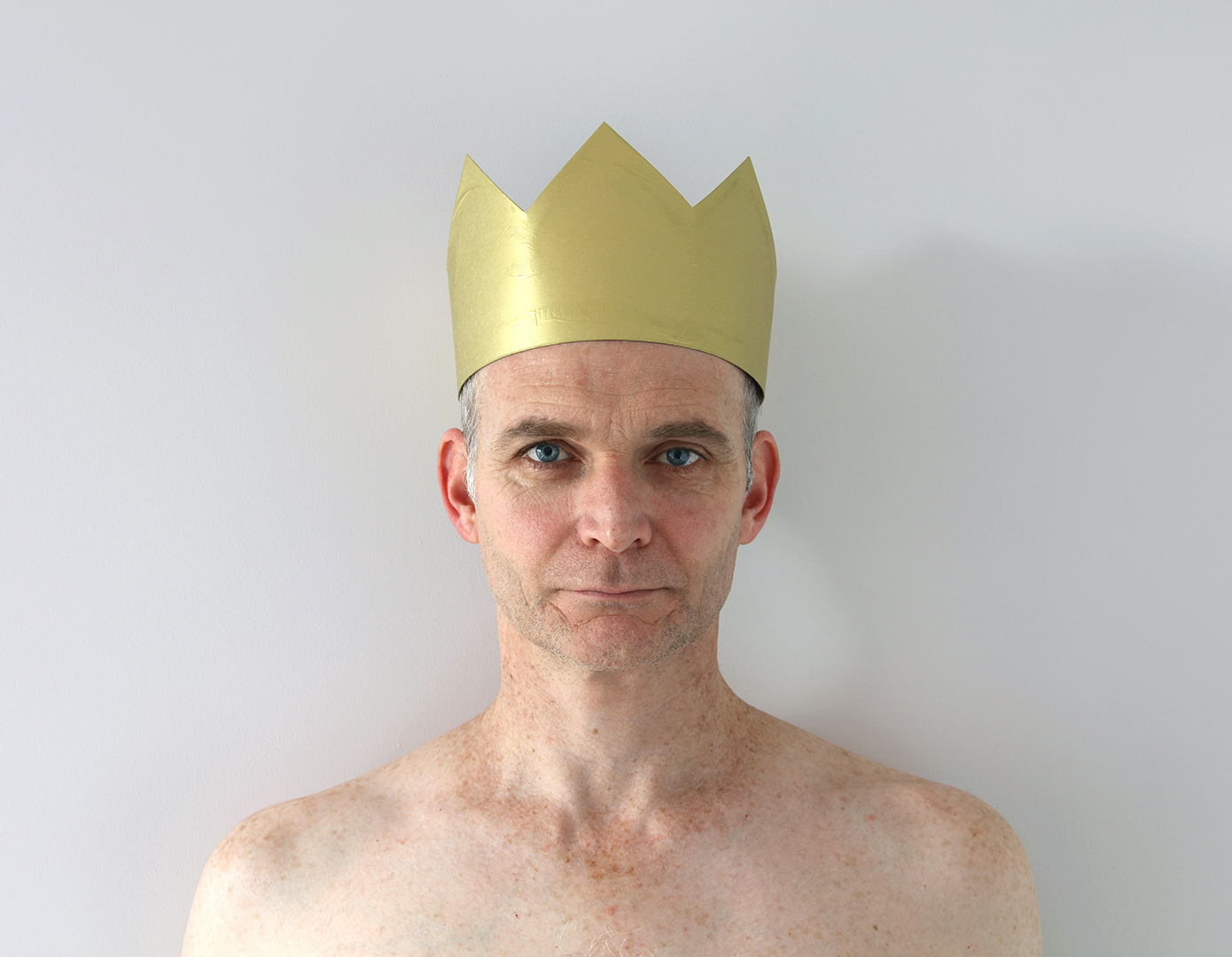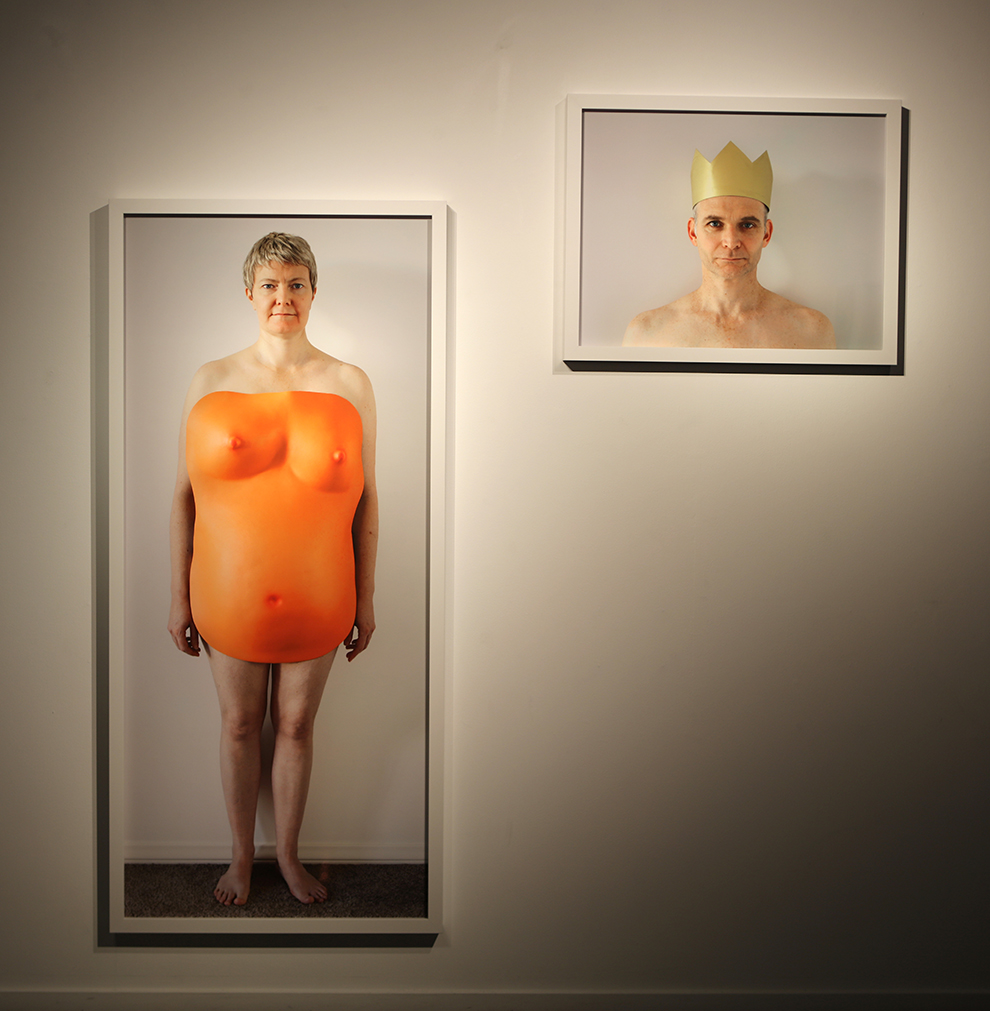


My partner and I have taken a journey over the past eight years into childlessness. Five of those years we were trying to have children before we stopped, grieved and moved on. Curator and writer Susan Bright describes ‘It is just a sad journey that shows that the state of being a ‘mother’ does not necessarily begin with conception or birth, but is something more complicated with roots deep within one’s intentions.’[1]
I have created a body of video and photographic works responding to the experience of this journey. Learn more about this journey in my opening speech.
Little Prince, 2016
Little Prince is made up of two photographic images. The larger 1500 x 650 mm of myself wearing a bright orange pregnant belly. The smaller 500 x 650 mm of my partner, Philip, wearing a gold paper crown.
The women with the prosthetic pregnant belly, refers to my pre-trying to have children self who had plans and dreams of becoming a mother. It also refers to the fertility treatments were the goal was to be this pregnant woman. Then there is grieving this un-achieved pregnancy and now, although I have accepted that I won’t have children, I still have the same desire.
The man with the crown, who has traveled this journey with me, I have disembodied with just his head and shoulders because that‘s the experience most men have during a pregnancy, they feel they are just the backup grew. But more importantly he’s here because the grief is much harder on men. In our culture vulnerability and masculinity don’t go together.
I have photographed him naked for vulnerability and asked him to smile with his eyes which has resulted in this soft warm expression. Using the crown as a symbol of power and authority and hanging the image at his height, with the crown giving him some extra height, to put him into a position of authority. I’m bringing vulnerability and masculinity together.
So why have I put these two images together? I had both of them in the studio knowing that I wanted them in the show but felt nervous for them. For him because this is the first time I’ve used a model, I’m very protective of Philip and I wanted to be very respectful of him in this context. And for her I was concerned that she might be objectified or sexualised within the male gaze that is still the dominant gaze in our culture.
I have put them together in order to take advantage of the male gaze. Within the male gaze the mother and wife are not to be sexualised. This comes from our history of the Madonna and marriage. Once married this woman would have belonged to this man, so his job is to stare you down, to protect her.
I may have over played my hand however, because the danger within the male gaze is that if you’re not being sexualised then you can become invisible. Fortunately the very orange pregnant belly is saving this image from invisibility. Not only being orange but because it’s having it’s own tug of war with the male gaze. I’m standing here naked but you can only see my arms and legs. There are large orange breasts for you to look at but I’m pregnant. Have you seen the very large nipples? Oh and by the way I’m with him.
Exhibitions
For Sale: baby shoes, never worn, Toi Poneke, Wellington, New Zealand, 2016
For Sale: baby shoes, never worn, SEVENTH, Melbourne, Australia, 2017
[1] Susan Bright, pg. 21, Motherlode: Photography, motherhood and representation in Home Truths: Photography and Motherhood, Ed. Susan Bright